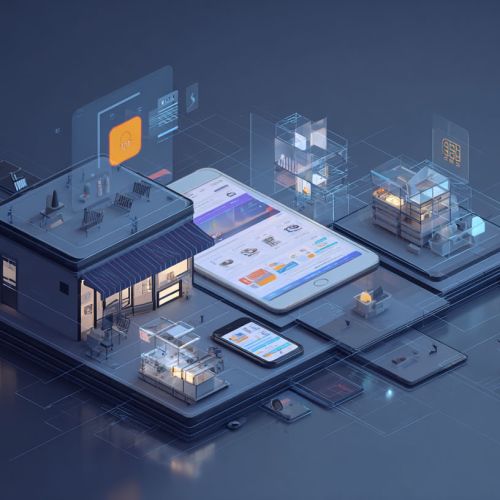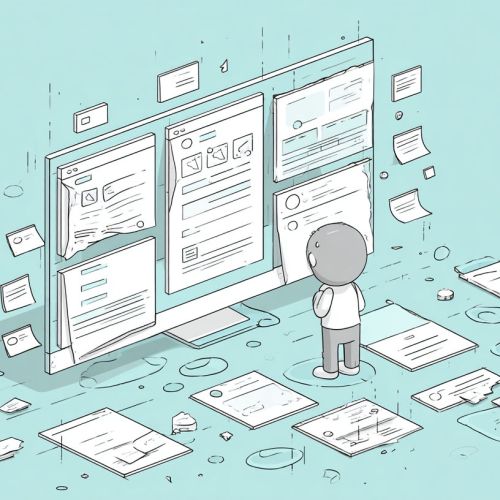In November 2022, I typed a simple prompt into an early version of ChatGPT. No big expectations. No grand plan. I just wanted to see what this new AI tool could do. Could it help me write faster? Could it take over some of the repetitive tasks in my day? Could it help me do research more efficiently?
At the time, it felt more like an experiment than a decision. But that moment of curiosity sparked a quiet shift. Two years later, AI is part of how I think, how I lead, and how I build. I use it almost every single day—not as a gimmick, not as a replacement, but as a real, working part of my daily toolkit.
Here’s what happened along the way.
The Real “Breakthrough”
Like many people, my first few attempts with AI were clunky. I typed short commands and got back generic responses. It wasn’t until I started treating it more like a conversation that things began to change. I stopped thinking of prompts as one-liners and started adding context, goals, and structure.
That small shift changed everything.
It reminded me of briefing a creative colleague: the clearer your vision and expectations, the better the outcome. AI isn’t magic. It mirrors the quality of your thinking. Once I understood that, I was able to pull useful insights, generate creative ideas, and solve problems much faster than before.
The moment I realized I could think with AI—not just delegate to it—that was the turning point.
How My Workflow Evolved
Before AI, I spent a lot of time researching across search engines, jumping between articles, PDF documents, and random sources. I’d lose hours in tabs, piecing things together manually. Now, I ask AI tools directly. I’ll throw a complex idea at ChatGPT, Claude, Gemini, or Perplexity, and ask for structure, clarity, or new angles I haven’t thought of.
The difference is immediate.
Instead of trying to make sense of ten open tabs, I have one focused, contextual conversation. I get clearer direction, faster summaries, and a better understanding of topics in less time.
It’s like having a research assistant, copywriter, strategist, and sparring partner—all available instantly.
My Daily Stack of Tools
Every tool I use now serves a specific purpose in my workflow. Here’s what’s in my current AI toolkit:
- ChatGPT helps with brainstorming, drafting, summarizing, and mapping out strategies. It’s my go-to when I need to think clearly or create content quickly.
- Claude adds nuance and empathy to written content. It often gives me ideas I wouldn’t have considered myself.
- Gemini works well when I want technical answers, or need to blend different types of data and insights. It helps me see things from a different perspective.
- Perplexity offers fast, citation-based web searches. When I want quick facts, relevant sources, or topic overviews, it cuts through the noise.
- MidJourney helps with visual concepts. Whether I’m exploring moods, concepts for a campaign, or design directions, it’s become a creative partner.
- Make.com is where automation happens. It connects everything in the background—content pipelines, workflows, notifications—and helps me scale ideas with minimal effort.
- n8n is another automation platform I rely on when I need more flexibility and control over data flows. It’s great for building custom workflows across tools and services, especially when Make.com reaches its limits or when I want to self-host.
- manus is my assistant for document-heavy tasks. I use it to analyze PDFs, dig into longer documents, and pull out relevant details that would otherwise take me hours to find manually. It helps me turn complex input into actionable insight, fast.
Each tool plays a different role in my day. Combined, they allow me to move with more clarity, more speed, and a stronger sense of direction. I can focus on what matters, knowing that the heavy lifting is handled behind the scenes.
Soon I will also have access to Google Agentspace which is something I am very curious about. If you want to have some fun besides the AI solutions mentioned above is Google’s NotebookLM. It is a wonderfully innovative solution for specific use cases.
What Surprised Me Along the Wa
Even after using AI regularly for nearly two years, there are still moments that catch me off guard. One of the biggest surprises—especially early on—was how confidently AI could give you an answer that sounded right, even if it wasn’t true.
Sometimes it fabricates case studies or sources. That taught me early on to fact-check, cross-reference, and treat AI as a starting point, not the final word.
Another surprise was how hesitant some people around me were to start using it. Especially when the topic of data privacy came up. I understand that concern, and I take it seriously. But I also believe we shouldn’t let fear slow us down unnecessarily.
If you’re not feeding AI sensitive client data or confidential business material, there’s a wide space to explore safely. I often tell people: be smart, not scared. The value far outweighs the risk when you stay aware of what you’re sharing.
Results I Can See and Measure
The benefits of using AI didn’t just show up in theory—they showed up in real work, real client relationships, and real numbers.
I’ve delivered projects faster. My content quality has improved. I’m handling more creative work without needing more time. That has led to better outcomes for clients and more growth for the business.
The tools haven’t just saved time. They’ve made room for better thinking, better decisions, and more value overall.
What I’m Building Next
Right now, I’m working on something I’ve been thinking about for a while: an AI-powered tool that focuses on sales workflows to support my sales team in Germany. The idea is simple. Give professionals a tool that helps them streamline their daily work, qualify leads faster, create content more easily, and automate parts of the process they shouldn’t be doing manually anymore.
The goal is to help people get more done without burning out. To build something that frees up mental space so they can focus on growth, not grunt work.
Automation is a big part of this. The less time we spend on repetitive tasks, the more time we have for ideas, strategy, and creativity.
A Few Words to Anyone Still Hesitating
If you’re in an industry that hasn’t embraced AI yet, you’re in a unique position. You have the chance to lead. Not because you’re the first to know about the tech, but because you’re willing to apply it before others feel ready.
Don’t wait until it’s the norm. Try things now. Explore tools. Get comfortable experimenting. The only way to learn AI is by using it. And the faster you start, the more confident and creative you’ll become.
AI isn’t about taking jobs. It’s about expanding what’s possible. That’s what the last 24 months have shown me—and I believe the next 24 will be even more transformative.






